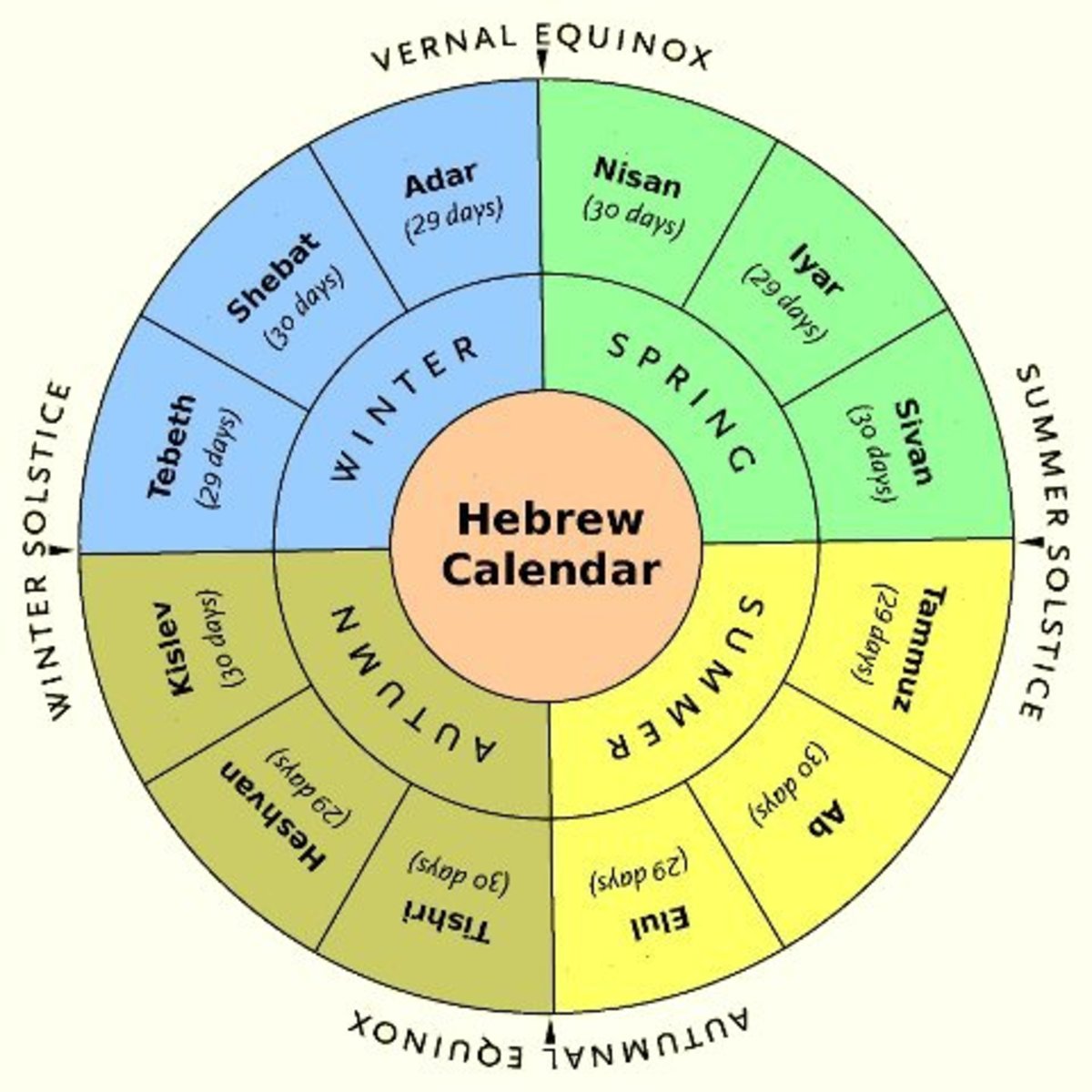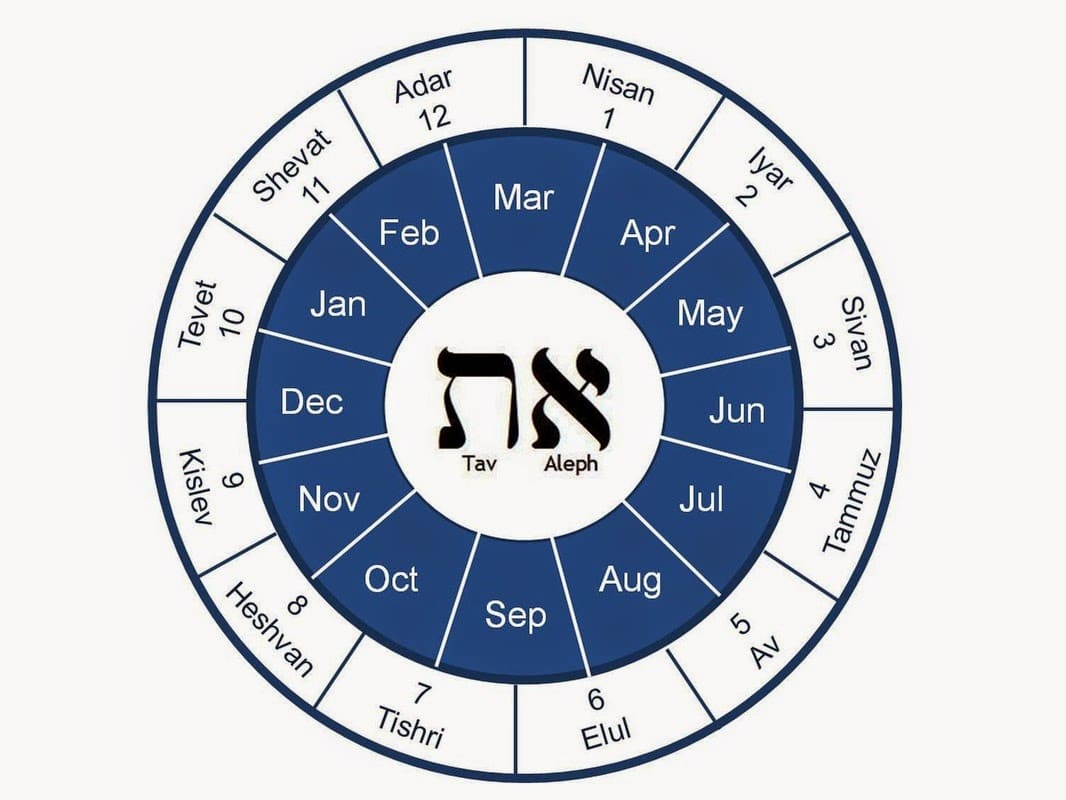Jewish Calendar Explained
Jewish Calendar Explained - Unlike the gregorian (civil) calendar, which is based on the sun (solar), the jewish calendar is based primarily on the moon (lunar), with. The jewish calendar is primarily lunar, with each month beginning on the new moon, when the first sliver of moon becomes visible after the dark of. Ever since g‑d took us out of egypt, the jewish people have been keeping track of time—and celebrating the festivals —according to the. Judaism marks and celebrates time in a number of ways —. The jewish calendar isn't just a tool for observing the passage of time.
Ever since g‑d took us out of egypt, the jewish people have been keeping track of time—and celebrating the festivals —according to the. The jewish calendar is primarily lunar, with each month beginning on the new moon, when the first sliver of moon becomes visible after the dark of. The jewish calendar isn't just a tool for observing the passage of time. Unlike the gregorian (civil) calendar, which is based on the sun (solar), the jewish calendar is based primarily on the moon (lunar), with. Judaism marks and celebrates time in a number of ways —.
The jewish calendar isn't just a tool for observing the passage of time. Unlike the gregorian (civil) calendar, which is based on the sun (solar), the jewish calendar is based primarily on the moon (lunar), with. Judaism marks and celebrates time in a number of ways —. Ever since g‑d took us out of egypt, the jewish people have been keeping track of time—and celebrating the festivals —according to the. The jewish calendar is primarily lunar, with each month beginning on the new moon, when the first sliver of moon becomes visible after the dark of.
The Hebrew Calendar A Journey Through Time And Tradition Top
Judaism marks and celebrates time in a number of ways —. The jewish calendar isn't just a tool for observing the passage of time. Unlike the gregorian (civil) calendar, which is based on the sun (solar), the jewish calendar is based primarily on the moon (lunar), with. The jewish calendar is primarily lunar, with each month beginning on the new.
The Hebrew Calendar Explained
The jewish calendar isn't just a tool for observing the passage of time. The jewish calendar is primarily lunar, with each month beginning on the new moon, when the first sliver of moon becomes visible after the dark of. Ever since g‑d took us out of egypt, the jewish people have been keeping track of time—and celebrating the festivals —according.
The Jewish Calendar with Dates for Each Month
The jewish calendar isn't just a tool for observing the passage of time. Judaism marks and celebrates time in a number of ways —. Ever since g‑d took us out of egypt, the jewish people have been keeping track of time—and celebrating the festivals —according to the. Unlike the gregorian (civil) calendar, which is based on the sun (solar), the.
All about the Jewish Calendar
The jewish calendar isn't just a tool for observing the passage of time. Ever since g‑d took us out of egypt, the jewish people have been keeping track of time—and celebrating the festivals —according to the. Judaism marks and celebrates time in a number of ways —. The jewish calendar is primarily lunar, with each month beginning on the new.
The Jewish Year in a Nutshell Letters to Josep
The jewish calendar is primarily lunar, with each month beginning on the new moon, when the first sliver of moon becomes visible after the dark of. Unlike the gregorian (civil) calendar, which is based on the sun (solar), the jewish calendar is based primarily on the moon (lunar), with. Ever since g‑d took us out of egypt, the jewish people.
What Is Hanukkah? A Closer Look at the Festival of Lights HubPages
Judaism marks and celebrates time in a number of ways —. Unlike the gregorian (civil) calendar, which is based on the sun (solar), the jewish calendar is based primarily on the moon (lunar), with. The jewish calendar isn't just a tool for observing the passage of time. The jewish calendar is primarily lunar, with each month beginning on the new.
FREE Printable Jewish Calendar 2023, 2024, and 2025
Judaism marks and celebrates time in a number of ways —. Ever since g‑d took us out of egypt, the jewish people have been keeping track of time—and celebrating the festivals —according to the. Unlike the gregorian (civil) calendar, which is based on the sun (solar), the jewish calendar is based primarily on the moon (lunar), with. The jewish calendar.
МУЗЕЙ ШОЛОМАЛЕЙХЕМА Киев The Jewish Calendar
Ever since g‑d took us out of egypt, the jewish people have been keeping track of time—and celebrating the festivals —according to the. Unlike the gregorian (civil) calendar, which is based on the sun (solar), the jewish calendar is based primarily on the moon (lunar), with. The jewish calendar isn't just a tool for observing the passage of time. Judaism.
How To Read The Jewish Calendar Ursa Alexine
Ever since g‑d took us out of egypt, the jewish people have been keeping track of time—and celebrating the festivals —according to the. Unlike the gregorian (civil) calendar, which is based on the sun (solar), the jewish calendar is based primarily on the moon (lunar), with. Judaism marks and celebrates time in a number of ways —. The jewish calendar.
What Is The Jewish Calendar Printable Calendars AT A GLANCE
Unlike the gregorian (civil) calendar, which is based on the sun (solar), the jewish calendar is based primarily on the moon (lunar), with. The jewish calendar isn't just a tool for observing the passage of time. The jewish calendar is primarily lunar, with each month beginning on the new moon, when the first sliver of moon becomes visible after the.
Judaism Marks And Celebrates Time In A Number Of Ways —.
Ever since g‑d took us out of egypt, the jewish people have been keeping track of time—and celebrating the festivals —according to the. Unlike the gregorian (civil) calendar, which is based on the sun (solar), the jewish calendar is based primarily on the moon (lunar), with. The jewish calendar isn't just a tool for observing the passage of time. The jewish calendar is primarily lunar, with each month beginning on the new moon, when the first sliver of moon becomes visible after the dark of.









